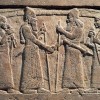


History is an unending dialogue between present and the past, that's why few pages of history give more insight than all the metaphysical volumes. (24)
This profile is from a federated server and may be incomplete. Browse more on the original instance.